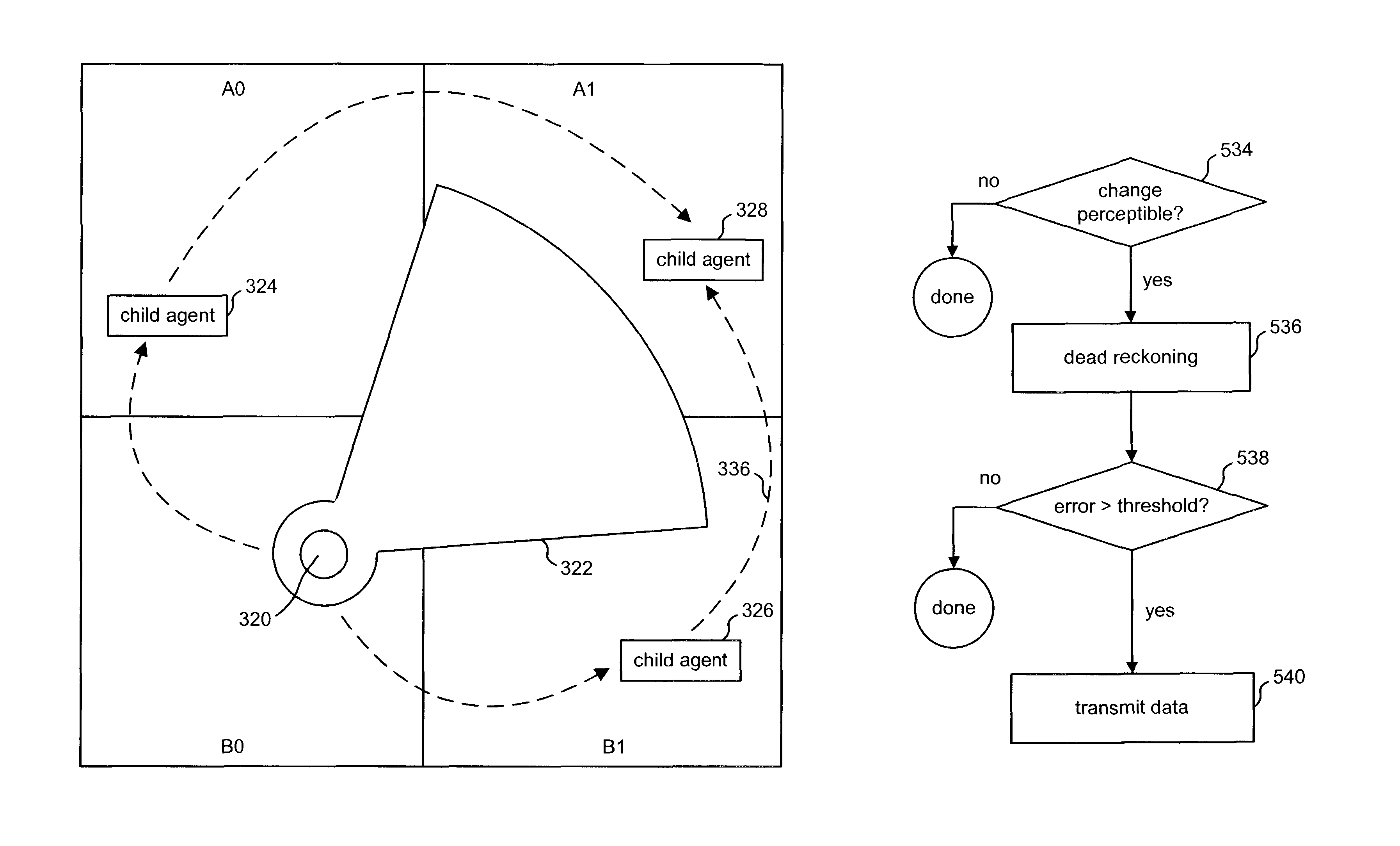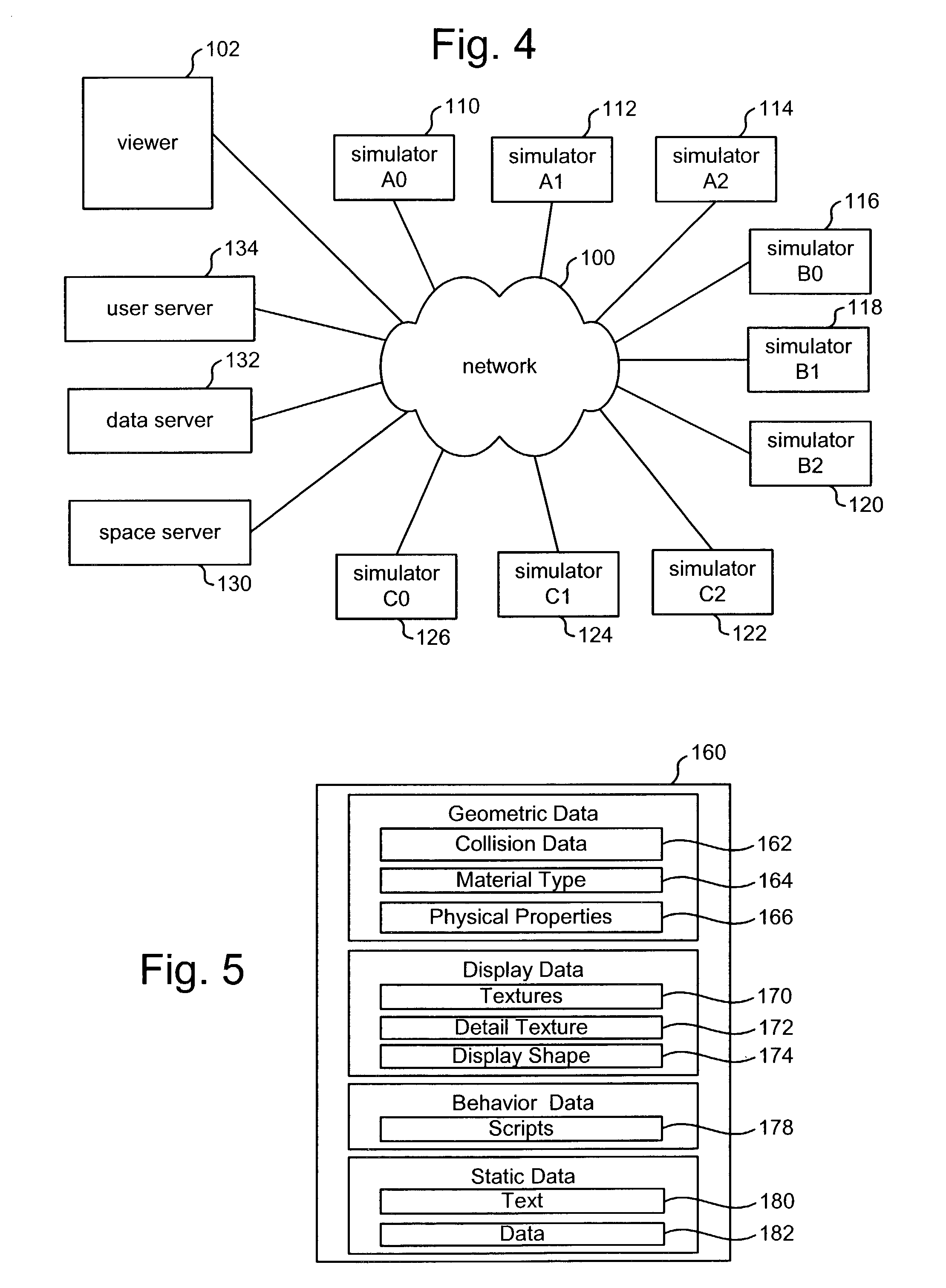System and method for distributed simulation in which different simulation servers simulate different regions of a simulation space
a simulation server and simulation space technology, applied in the field of simulation systems, can solve the problems of large computational workload, large computation volume, and inability to meet the needs of many computer systems, and achieve the effect of reducing the amount of data transmitted and high resolution images
- Summary
- Abstract
- Description
- Claims
- Application Information
AI Technical Summary
Benefits of technology
Problems solved by technology
Method used
Image
Examples
Embodiment Construction
[0049]The present invention can be used to simulate a simulation space. Examples of a simulation space include a surface, a region of air space, a volume of water, a building, a body, an imaginary world, outer space, a building, a cave, a portion of the Earth, a mechanical device, an electrical device, an optical device, or anything else imaginable that can be modeled. Additionally, the simulation space can be a combination of any of the above. In many cases, the simulation space will be a three dimensional environment. However, the simulation space can also be a two-dimensional environment, or other than two or three dimensions.
[0050]One embodiment of the present invention partitions the simulation space into a set of regions so that each location in the simulation space is located in a region. FIG. 1 shows simulation space 10 divided into nine regions, A0, A1, A2, B0, B1, B2, C0, C1, and C2. FIG. 1, which depicts a top view of the three dimensional simulation space 10, shows the r...
PUM
 Login to View More
Login to View More Abstract
Description
Claims
Application Information
 Login to View More
Login to View More - R&D
- Intellectual Property
- Life Sciences
- Materials
- Tech Scout
- Unparalleled Data Quality
- Higher Quality Content
- 60% Fewer Hallucinations
Browse by: Latest US Patents, China's latest patents, Technical Efficacy Thesaurus, Application Domain, Technology Topic, Popular Technical Reports.
© 2025 PatSnap. All rights reserved.Legal|Privacy policy|Modern Slavery Act Transparency Statement|Sitemap|About US| Contact US: help@patsnap.com



